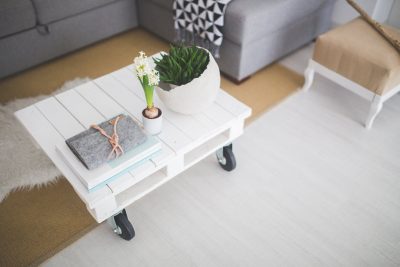Let’s paint a picture: It’s Sunday morning, and you’re looking for that one book to cozy up with, but instead of quickly locating it, you’re met with piles upon piles of unsorted items. Familiar? Clutter doesn’t just take up physical space, but mental space too, creating a sense of overwhelm that can be mentally draining.
Introduction: The Impact of Clutter on Well-being
Our environment profoundly impacts our mental state. A cluttered space, especially a clutter home, often mirrors a cluttered mind, full of distractions and stressors. When things are out of place in our cluttered home, our brain naturally goes into a state of unrest. Thus, addressing clutter is not just a house chore but an essential exercise for our minds.
Benefits of Decluttering
Decluttering offers more than just a tidy space; it positively impacts various areas of our lives. Let’s delve a little deeper into these benefits:
- Mental Well-being: An untidy environment often mirrors a cluttered mind. Numerous studies by psychologists highlight the tangible connection between cluttered spaces and elevated stress or anxiety levels. When you declutter, it’s similar to releasing mental burdens. As your physical space becomes more streamlined, so does your mental state. Removing excess creates room for tranquility and clarity, facilitating a more relaxed and focused mind.
- Productivity Boost: Imagine the frustration of searching for a misplaced document or tool. Such disruptions are commonplace in cluttered spaces and can seriously hamper productivity. By decluttering, you create a space where every item has a designated spot. This arrangement not only speeds up task completion but also reduces the mental fatigue associated with constant searching.
- Aesthetic Appeal: Beyond the tangible benefits, there’s an inherent joy in experiencing a well-organised space. A decluttered room exudes a sense of balance and harmony, making it a pleasure to be in. The satisfaction derived from seeing everything in its rightful place, from neatly stacked books to orderly kitchen counters, can elevate your mood and make your living space more inviting.
- Financial Savings: The process of decluttering can also be financially rewarding. As you sift through your items, you’re likely to come across things you’ve lost or forgotten, reducing the urge to buy replacements. Moreover, there’s potential monetary gain in selling items you no longer need. Platforms like online marketplaces or garage sales can transform unused belongings into extra cash. This decluttering exercise not only saves money but can also bolster your savings.

Starting Your Decluttering Journey
Decluttering, especially if it’s been a while since you last tackled it, can appear like scaling Everest. But fear not! Like any significant journey, the path to a decluttered home starts with a single step. By understanding how to declutter your home, you can make this task more manageable and rewarding.
- Overcoming Procrastination: The first step is often bogged down by hesitation and procrastination. We look at the piles of items accumulated over the years and feel immediately defeated. But remember, decluttering doesn’t mean clearing everything out in a single day.
- Start Small, Start Now: Instead of feeling overwhelmed by the massive mess, start with a small bit. Dedicate just 10 minutes a day. Set a timer and focus only on sorting a single drawer, a shelf, or a small corner of a room. You’ll be surprised at the progress you can make in these short bursts. Gradually, as you gain momentum, these short spurts become longer sessions, and before you know it, one area is clutter-free.
- Celebrate Small Wins: Got a drawer sorted? Celebrate it! Take a moment to appreciate the clarity and order you’ve brought to that small space. This positive reinforcement will motivate you to move on to the next spot.
- Emotional Journey: Decluttering isn’t just about discarding old magazines or clothes that no longer fit. Often, it’s an emotional dive into memories, sentiments, and attachments.
- Objects and Memories: We often hold on to objects because of the memories they represent. But remember, letting go of an object doesn’t mean you’re discarding the memory. Consider taking photos of sentimental items before parting with them. This way, you preserve the memory without holding onto the physical item that might be taking unnecessary space.
- The Marie Kondo Principle: Japanese organizing consultant Marie Kondo emphasises the emotional aspect of decluttering. Hold each item and ask yourself if it sparks joy. If it doesn’t, thank it for its service and let it go. By doing this, you ensure that your space is filled only with items that bring happiness and positivity.
- The Room-by-Room Approach: This approach makes the big task of decluttering a home easier. By concentrating on one space at a time, it ensures a detailed and thorough process. This method not only breaks the decluttering journey into manageable chunks but also cultivates a growing sense of accomplishment with each completed room.
Tips for Each Room:
- Kitchen: Start with clearing out expired products. The pantry is a great starting point. A clear countertop is a happy countertop. Assign every kitchen gadget a home. Utilise cabinet door space with organisers, perfect for lids, baking sheets, or cutting boards.
- Living Room: Begin by categorizing items into ‘keep’, ‘donate’, and ‘trash’. Reduce the number of decorative items. Embrace functional décor like storage ottomans or coffee tables with drawers. Consider multi-functional furniture that can store items while serving its primary purpose.
- Bedroom: The wardrobe is your starting point. A simple rule: if it hasn’t draped you in a year, consider donating.
Under-bed storage can be a goldmine for items like shoes or off-season clothing.
Nightstands can quickly become clutter magnets. Regularly clear out unnecessary items and maintain only the essentials.
- Bathroom: Start by safely disposing of expired cosmetics and medicines.
Utilise vertical space with hanging organisers or over-the-toilet shelving units.
A carousel or spinning organiser can be handy for commonly used items.
- Home Office: A pristine desk is a productive desk. Keep only what’s necessary on the surface.
Embrace digital storage to minimise paper clutter.
Consider wall-mounted organisers or pegboards for supplies, ensuring your essentials are easily accessible yet off the desk.
- Children’s Room: Organizing toys in bins and rotating them keeps things fresh and reduces clutter.
Designate specific zones for play, study, and relaxation.
Engage your children in the decluttering process. It’s a valuable lesson in responsibility and the importance of order.
- Garage/Attic/Basement: Clearly define zones: one for tools, another for seasonal items, and perhaps one for keepsakes.
Install shelving units or pegboards to utilise vertical space.
Periodically review what’s stored. As needs change, items that once seemed indispensable might now be ready for a new home or purpose.
How Storage Units Can Help Declutter Your Home:
Storage units provide an invaluable space for homeowners looking to declutter. They serve as a temporary home for items that carry sentimental value or are used occasionally, like seasonal decorations or equipment. By relocating these possessions to a self storage unit, homeowners can free up essential space in their primary residence without parting with cherished items. Key points when using storage units include making an itemised inventory for tracking, labelling boxes for easy access, and opting for climate-controlled units for belongings sensitive to temperature changes.
Eco-friendly Decluttering
Being environmentally conscious as you declutter is crucial. Recycle what you can repurpose items to give them a new life, and consider donating to sustainable charities. The planet will thank you.
Strategies to Stay Clutter-Free
One in, One out Rule: For every new item you bring into the house, ensure one goes out. This prevents accumulation and is the easiest way to start decluttering. Regular Checks: Dedicate one day a month to review clutter-prone zones and consider using a decluttering checklist for an efficient process. Mindful Purchasing: Before buying something new, ask yourself if it’s truly needed. Regular property maintenance is also crucial in keeping the home in optimal condition and reducing the chances of areas becoming clutter-prone due to neglect or disrepair.
Tech and Apps
There are several apps to help declutter. From those who assist in selling unused items to those dedicated to cleaning up your digital junk folder or those who help digitise memories, embrace technology to make your decluttering journey easier.
When to Seek Professional Help
If the task feels monumental, it might be time to call in professional organisers. They bring an unbiased perspective, helping you make tough decisions and setting up systems to ensure you stay organised. Interviewing a local professional organiser might provide personalised tips and strategies for your specific needs.
Conclusion: Embrace a Simplified Life
If the task feels monumental, it might be time to call in professional organisers. They bring an unbiased perspective, helping you make tough decisions and setting up systems to ensure you stay organised. Interviewing a local professional organiser might provide personalised decluttering tips and strategies for your specific needs.
Ready to embark on a decluttering journey? Start today and witness the transformative power of a simplified home. Share your decluttering stories in the comments below or tag us on social media using #UltimateDeclutterGuide.













